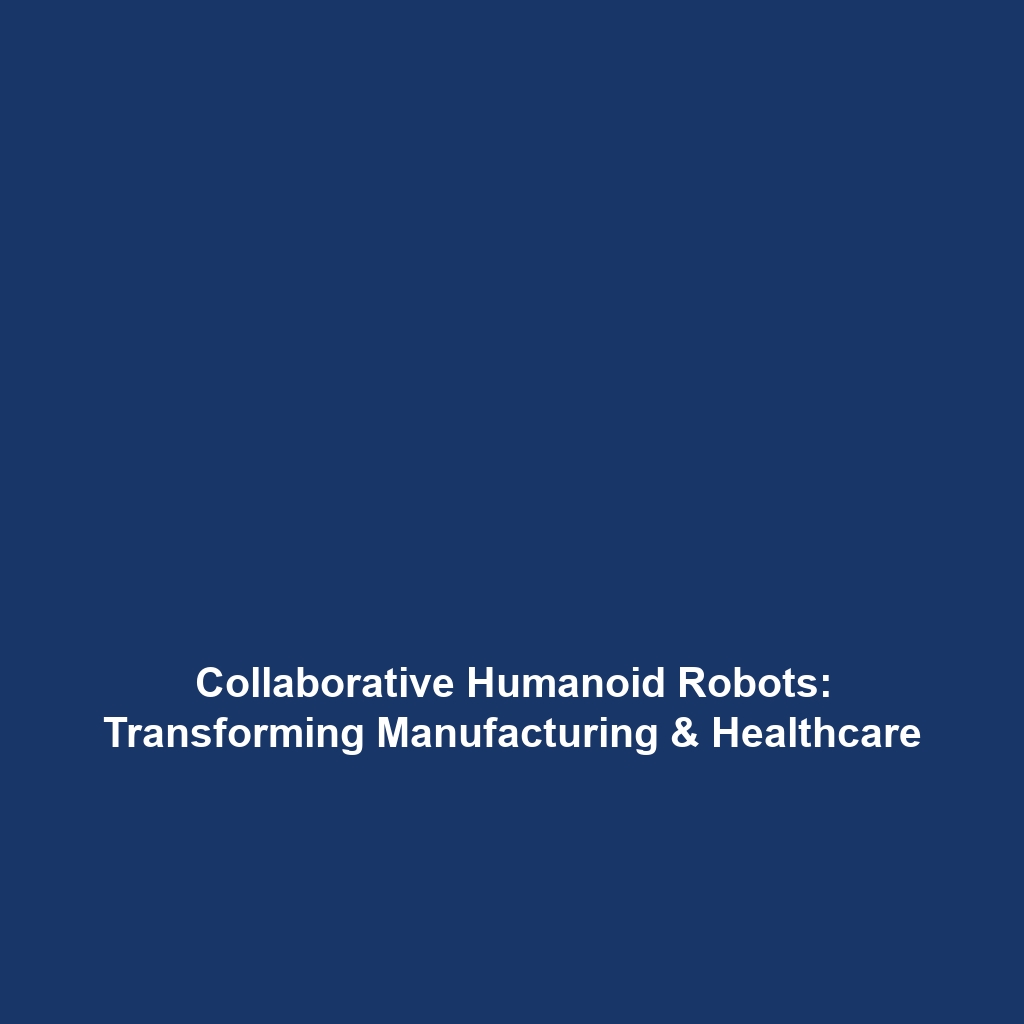How Humanoid Robots Assist with Patient Monitoring, Medication Delivery, and Companionship for the Elderly
Humanoid robots are making strides in healthcare by taking on vital roles in patient monitoring, medication delivery, and providing companionship for the elderly. As populations age and the demand for healthcare services rises, the significance of these robots in enhancing care quality and efficiency becomes increasingly clear. This article discusses the roles humanoid robots play in elderly care and their transformative potential within the broader context of robotics.
Key Concepts
Understanding how humanoid robots help with tasks such as patient monitoring, medication delivery, and companionship involves exploring several key principles:
- Autonomy: Humanoid robots can operate independently, which enables them to monitor patients’ conditions without constant human supervision.
- Interactivity: Advanced humanoid robots leverage natural language processing to engage with elderly individuals, enhancing their experience through meaningful interactions.
- Safety and Support: Equipped with sensors and algorithms, they ensure the safety of elderly patients, providing timely support when needed.
Applications and Real-World Uses
Humanoid robots are increasingly employed in various settings, such as hospitals, nursing homes, and private residences. Some notable applications include:
- Patient Monitoring: Robots like the Care-O-bot track vital signs and alert healthcare providers in case of anomalies.
- Medication Delivery: Systems such as MedBot deliver medication at scheduled times, ensuring adherence while minimizing the risk of errors.
- Companionship: Robots like PARO, a robotic seal, provide emotional comfort and social interaction to combat loneliness among the elderly.
These applications demonstrate how humanoid robots are revolutionizing elderly care, making it more efficient and personalized.
Current Challenges
Despite the promising applications, several challenges persist in the deployment of humanoid robots for elderly care:
- Technological Limitations: Current robotics technology may not fully replicate human empathy and interaction quality, making some older adults hesitant to accept robotic companions.
- Privacy Concerns: The use of robots in personal spaces raises questions about the privacy and security of personal data.
- Integration Issues: Integrating humanoid robots into existing healthcare systems can be complex and resource-intensive.
Future Research and Innovations
The future of humanoid robots in elderly care is vibrant with potential innovations, such as:
- Advanced AI: Future robots will likely incorporate machine learning algorithms to enhance interactive capabilities, allowing for more natural conversations.
- Telepresence: Next-generation robots may facilitate remote consultations with healthcare professionals, improving patient access to care.
- Emotional Recognition: Developing systems that recognize and respond to emotional cues could significantly improve companionship roles.
Research in these areas is underway, promising to enhance the functionality and acceptance of humanoid robots in daily life.
Conclusion
In summary, humanoid robots are playing an increasingly important role in patient monitoring, medication delivery, and companionship for the elderly. Their contributions to healthcare are not only improving the quality of care but also addressing the growing demand for elderly support. As technology advances, the integration of humanoid robots in our health systems will become more seamless, offering new opportunities for enhanced patient care. For more insights on the advancements in humanoid robots, consider exploring our articles on robotic healthcare solutions and AI in patient care.









